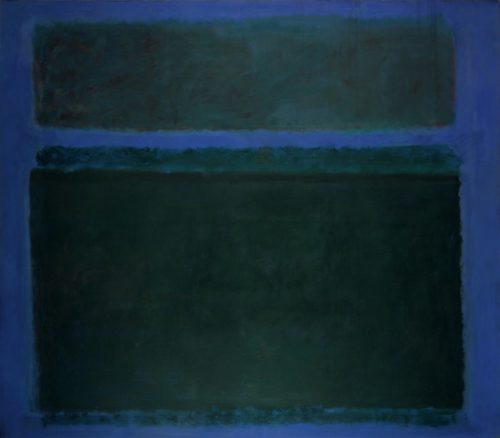
Mark Rothko
..imitation supplements inadequate congenital variations in the direction of an instinct, and so, by keeping the creature alive, sets the trend of further variations in the same direction until the instinct is fully organized and congenital. If both of these views be true, as there seems reason to believe, then imitation holds a remarkable position in relation to intelligence and instinct.
Karl Groos (The Play of Animals)
“To my mind certain so-called abstraction is not abstraction at all. On the contrary, it is the realism of our time”.
Adolph Gottlieb
“Like everything genuine, its inner life guarantees its truth.”
Franz Marc
“We’re developing a new citizenry. One that will be very selective about cereals and automobiles, but won’t be able to think.”
Rod Serling
The changing reputation of artworks and movements is often revealing of deep malaise hidden by the constant shifts in taste and reputation. Or at least the shifts and changes become often more meaningful than the work themselves.
I had three (THREE) different conversations about Abstract Expressionism the last couple months ..in two cases specifically about Jackson Pollock … in which my interlocutor conveyed that when they were young (all are in their fifties or early sixties) everyone revered The New York School, and they, too, revered and admired the work of Pollock and Rothko, Kline, et al. Each then said that now they realized they were *faking* it. They no longer felt anything when looking at the work of the Ab Ex painters. This is only anecdotal, but I suspect it reveals something of a cultural pattern, a shift in fashion and taste. This is to segue into two points: one is that I think the Abstract Expressionists, at least the New York School (so called) stand in a position of enormous importance in the cultural memory of the U.S. And two, that it is worth looking at what followed, and also came before in American painting.
The New York School (and I wrote about them before here….http://john-steppling.com/2014/04/revisiting-the-new-york-school/) looms now as the last gasp of sincerity but also of something inherently radical in American art. They were the last non MFA movement, the last non institutional movement in painting. These were working class men (and several women, the most significant being Perle Fine, Michael West, and Joan Mitchell) and many were immigrants and almost none went to prestigious Universities.
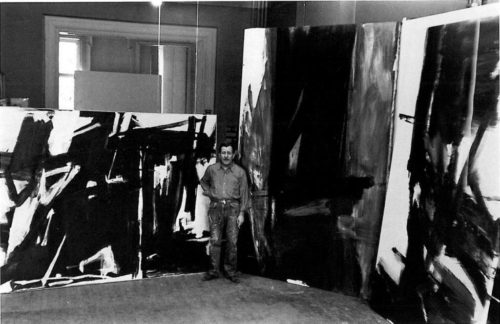
Franz Kline in his studio at 242 W. 14th st.
Franz Kline grew up in relative poverty in Wilkes Baare, Pennsylvania. His father, a saloon keeper committed suicide when Kline was seven. He grew up in a boys home after that. Kline was, perhaps paradoxically, the least philosophical of the New York School. But he was also a purist in some sense, a worker in restricted palettes of mostly black and white, but when he did use color, it was always severe and jarring. He died young, at age 51 of a rheumatic heart disease. Depression ran through the entire school of Ab Ex. And it is interesting to look at the minor painters of this time (and after) to really see just how extraordinary and indelible were the works of the main group. In a New York Times review of “Franz Kline, the Vital Gesture” (a retrospective show from the 1980s) the paper wrote …“If his work is boisterous, it is also silent. If it is a celebration of unfettered movement, it is also a scar. If it is filled with suggestions of windows and doors, those windows and doors have often been boarded up or slammed shut.” And like all of the New York School, Kline’s work came from a landscape of labor and impoverishment. A childhood spent in the coal mining hills of Pennsylvania. And it is that sense of toil and perhaps futility that today is so pronounced in the landscape of the U.S. that is reflected in this work; it is a good part of what is so both prescient, and fatalistic in best Abstract Expressionist artists .
The fact that within a decade most of these painters were famous, and their canvases selling for prices they had never imagined (not to mention the CIA’s short lived attempt to promote Ab Ex as a hedge against Communism and as a sign of American freedom, an irony given the troubled childhoods of nearly all these painters) suggests that the system was instinctively preying on and attempting to neutralize that which it found too defiant and anarchic. And for all the praise and fame and eventual fortunes that came to be associated with The New York School, there is something refractory and stubborn in this work, but also, now, over say the last twenty years, there is that backlash that says, oh, I was faking it. I was never *really* moved standing in a room with floor to ceiling paintings by Pollock.

Perle Fine
Barnett Newman, the least gestural of the Ab Ex group, as a young man worked at this father’s clothing business, one that went bankrupt, then created a magazine for worker’s rights, and eventually decided to study Ornithology and to give up painting. He had no shows or exhibits in the early fifties. Newman studied only briefly at the Art Students League (like Kline and Gottlieb) but had no real significant shows until 1957. Newman, like Rothko and Gottlieb, was Jewish. All of them carried a sense of both Talmudic mysticism, and of political stigmatism. Rothko was born in what is now Latvia, to Jewish parents, in an intellectual but impoverished home. His father was a Marxist and aggressively anti-religious. Rothko spoke and wrote both Yiddish and Hebrew, as well as English and Russian. He and the family fled Russia when he and his brothers were conscripted into the Imperial Russian army. In the U.S. he lived in Portland at first, joined the IWW and went to meetings run by Big Bill Hayward and once heard Emma Goldman speak, a life changing experience. He won a scholarship to Yale, but due to his political bent the scholarship was revoked. He left for New York where he worked as a bus boy and attended some classes at the Art Student’s League. Rothko, one early friend remembers, never studied, but read constantly. He wanted to be a political organizer. But painting kept gnawing at him.
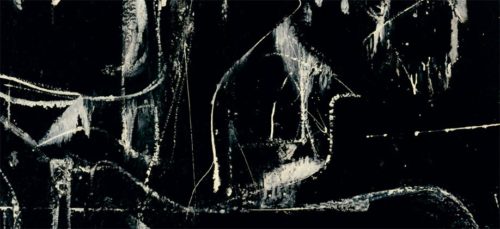
Willem De Kooning
Brice Marden said this interesting thing about Newman, and how he brought the space so close to you, close to your face. And really that’s a very fascinating comment. Abstraction itself, at least for the U.S., for American culture, has never really been fully accepted. Or for most Americans, it is never comfortable to embrace abstraction because of this lingering need for definitions, for a kind of Protestant demand for the practical, and also because, by extension, a sense that virtuosity prevail. One must applaud displays of skill. Many Americans still feel that egotistical display is the most valid. Marina Abramovic is all ego, stripped of virtuosity certainly, but has replaced that with sheer ego. It is the shriek of egoism. It is also the fact that abstraction (or certain kinds of abstraction…more on that below) are counter to the computational logic that is so ascendent now in Western society and culture. It is the anti-instrumental, at least as one finds abstraction in the New York School. If the top tier of the New York School was Pollock and Rothko, then the second tier was likely Kline, DeKooning, Still, Newman, and perhaps Gottlieb. Then came a number of minor but still legitimate abstract expressionist painters. Robert Motherwell is one, and I mention him because the problem, as I see it, with Motherwell, is that he is too calculating. The painting posted here bears comparison with Kline, or DeKooning. Motherwell is a very good painter and he is an intelligent painter. But there is a subtle and indelible quality, however slight, of calculation, of almost manipulation.
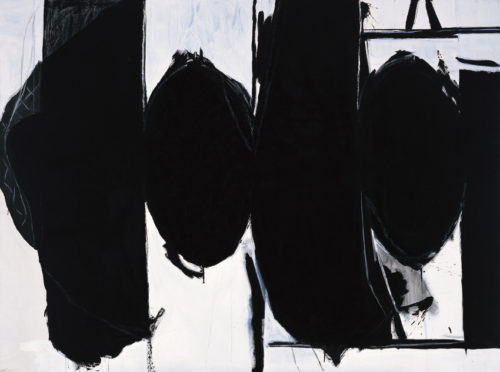
Robert Motherwell
It is very hard to execute such a thought experiment without seeing these works in person. It is also interesting that Motherwell spent most of life in California, and also that he came from a well to do family (his father was a bank president and he attended Stanford University where he got a degree in philosophy).
But more important than delving into another examination of Ab Ex, has to do with how it fits into U.S. culture that came after, and also to what came before. My sense is that Ab Ex marked the end of something, marked the end of a certain relationship that is class mediated and situated in western capital and which began, perhaps around the time of the Renaissance. One could find other historical markers, and if I want to make that statement about Modernism, then it sometime near the end of the 19th century. It is easy today to visit galleries or Biennales or museum shows and recognize the stunningly bad work that passes for “art”. And this always begs the question, wrongly, but it begs it, and that is the question of ‘what is art’? And it is a meaningless question. But I will return to that below. The point is that one can walk into galleries that focus on contemporary work and see absurd conceptual pieces, and everyone, I think, has had this experience. I remember a show where there was a plate on a pedestal and atop the plate sat six pancakes. When I saw the show the pancakes were already a week old. I asked if one was expected to buy aging pancakes. The curator said, no, you are buying the recipe for making them. This is the sort of stuff that is made fun of a lot today. And it is a bit like conspiracy theory, as an idea. There are conspiracies, that is a fact. But there are also jillions of absurd embarrassing delusional conspiracies out there. And those insane tin foil hat claims serve to discredit skepticism in general. Just as empty banana boxes with spotlights on them serve to discredit contemporary art. But none of this is very important, I don’t think. For the real crises that runs just below the surface of public discourse has to do with the crises of Capitalism. A crises that is complex and not amenable to quick social media commentary. Nor is it something giant telecoms and TV networks are going to allow to be heard. And increasingly there are fewer and fewer people who can articulate any sort of coherent critique of art and culture in the West today. And few who care at all to even think in those terms.
It is worth a small sidebar here that there was influential abstraction in Europe post WW2. Among the most prominent and a painter I think very highly of, was Hans Hartung. He joined the French Foreign Legion and fought in the war, and was captured by the gestapo and imprisoned for both fighting on the wrong side, AND for painting degenerate art. He also lost a leg during his capture. Born in 1904, he too got a degree in Philosophy at the University of Leipzig.
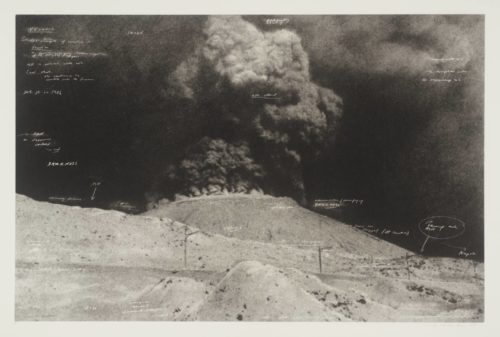
Tacita Dean (Vesuvio, 2001)
“On the one hand, especially in art, writing, and theory, trauma discourse continued the poststructuralist critique of the subject by other means, for, strictly speaking, there is no subject of trauma—the position is evacuated—and in this sense the critique of the subject seems to be most radical here. On the other hand, especially in therapy culture, talk shows, and tell-all memoirs, trauma was treated as an event that guarantees the subject, and in this register the subject, however disturbed, rushed back as survivor, witness, testifier. Here a traumatic subject does indeed exist, and it has absolute authority, for one cannot challenge the trauma of another: one can only believe it, even identify with it, or not. In trauma discourse, then, the subject was evacuated and elevated at one and the same time. And in this way it served as a magical resolution of contradictory imperatives in the culture of the period: the imperative of deconstructive analyses on the one hand, and the imperative of multicultural histories on the other; the imperative to acknowledge the disrupted subjectivity that comes of a broken society on the one hand, and the imperative to affirm identity at all costs on the other. In the 1990s, thirty years after the death of the author announced by Roland Barthes and Michel Foucault, we were witness to a strange rebirth of the author as zombie, to a paradoxical condition of absentee authority.”
Hal Foster (Bad New Days)
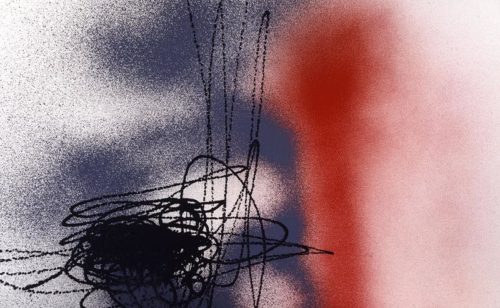
Hans Hartung
Foster’s book touches on a couple things that are relevant here. When he focuses on the artist Tacita Dean, he is raising the issue of history, of a history that is treated much as Sebald treated history; as a long procession of meaningless detritus and debris that has so accumulated that it threatens to obliterate the meaningful, or perhaps it raises questions about the nature of meaning in history. Dean is fascinating and inspired artist, and her work is mostly archival, using old post cards and items found at flea markets, as well as her own photographs of doomed or unfinished architecture. Hers is the art of failure. And it is infused with a singular and disturbing aesthetic of loss. She hovers somewhere between Sebald and Benjamin perhaps. But she is also fascinated, if not almost obsessed, with analog film. And she senses, correctly I think, that it is important to continue to demonstrate and examine how and why earlier film technologies differ from their digital successor.

Michael (Corinne) West.
“The conflict between art criticism and the escalating market in contemporary art is not a recent one. When I began writing criticism in 1979, the market presence was known, but rarely appeared as a dominant issue. It was nothing compared to the booming multi-national enterprise that exists today. With the enormous growth of biennials and international art fairs in recent years, there is little doubt as to the far-reaching consequences of investment in art, at least not among those who are predisposed to invest. As early as 1973, the omen of contemporary art’s financial potential was made visible, largely through the record-breaking prices set by the auction of the Robert Scull Collection. A decade later, in the ’80s, the evidence would become increasingly more visible. “
Robert C. Morgan
I would add the Saatchi Gallery, which opened in London in 1985, is the other signature event in the financialization of contemporary art. Now, much as I am haunted by much of Dean’s work, there is also an uncomfortable trace quality of voyeurism about it, and a kind of over production feeling — the aestheticization of disaster. She is very good, very intelligent and her work is always extraordinarily convincing. There is a heightened taste at work. But still….still….why is it also troubling? And I think the answer lies in the shifts in class perception for one thing. The nature of elite gallery showings and the exclusion of those who cannot afford to see big ticket shows or buy three hundred dollar books.
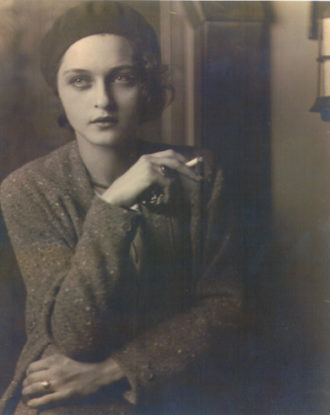
Michael West
The movements that formed in Europe in the fin de siecle, that corresponded with the birth of psychoanalysis and discoveries in the field of optics — these movements which were reactions to the growing industrialised socities of the West, were infused (largely) with a mysticism and nostalgia for magic and myth. This was more true of eastern and northern Europe than the Mediterranean. And it found its spokespeople primarily in Great Britain. The Theosophical school of Mdm Blatvasky, and Gurdjieff are most notable for the bourgeois celebrity adherents they attracted. From Yeats to Lewis Carroll, to Conan Doyle and E.M. Forester. And later Peter Brook, of course, and Robert Duncan. But also, it had a profound influence on painting and the arts. Most famously in Kandinsky, but also Hilma Af Klint and designer Charles Rennie Mackintosh. As well as Paul Klee. And it was Kandinsky who ushered in the notion of abstraction, or non figurative painting. And then Klee. And they all were reacting against materialism, rationality, positivism, and bourgeois conformity. Albeit in varying and often quite different ways. Piet Mondrian was another committed follower of Madame Blavatsky, and another painter who helped legitimize the non representational. Mondrian, born in the Netherlands, founded De Stijl with Theo Von Doesburg. Mondrian left for Paris, and then fleeing fascism for London and eventually New York. Von Doesburg is in some ways, for me anyway, more interesting. And his design and architecture was the secular (non Theosophical) version of Mondrian. And yet, De Stijl is now seen as important for commercial design, and its relationship, perhaps, to the Bauhaus. But its not more than that because the search there was limited to begin with.

Staircase at “Cinébal” at the Aubette, Strasbourg. Design by Theo Von Doesburg. 1926.
One thinks of Art Nouveau, and in Germany, Jugendstil. There were parallels in literature, as well, and in architecture. And there was more overt social criticism, too, in painters such as Max Beckman and Otto Dix. In music there was a sense of spiritual cosmic quest, and with a recovery of something almost primal — Bela Bartok and Mahler come to mind. But this romanticizing of the irrational found its most acute expression in painting. And the effects of the works of Klee in particular were felt even in the formation of the Bauhaus school. In Vienna the contributions revolved around the Jewish culture of that city — and here it should be noted that there were hardly any Jews in Vienna before 1866 when Prussia defeated Austria and initiated reforms that included reversing the bans on Jews living within the city limits. These forces, whether in Scandinavia or the Netherlands, in France or England, or Austria, all shared some similarities, whatever the surface differences.
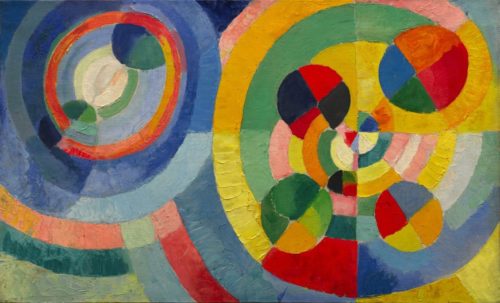
Robert Delaunay
The influence of psychoanalysis cannot be over-emphasized, I don’t think. For the first generation of Freud’s students one saw a deep socialist radicalism, and a sense of wanting to alter the course of western socities…of the world, even. The Theosophists, too, had grand global visions for reconstituting the human condition. Gurdjieff saw men as asleep — another image that ran alongside the dreamwork of Freud and his students. The unseen — now seen with optical technology, but unseen in other ways as well. The ability to see what previously was unseeable by the human eye only deepened the enigma of the human. Man as ignorant of himself. The painters of these various schools all saw in abstraction a means to finding the deeper reality buried beneath bourgeois restrictions.

Eugen Schmohl, architect. Borsig Tower, Berlin. 1922.
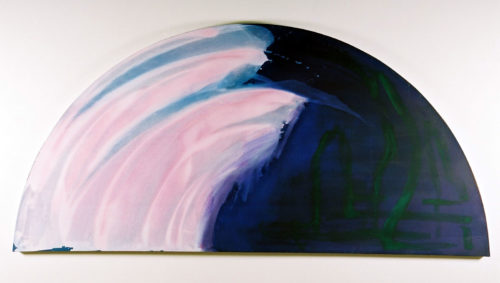
Gretchen Albrecht, 1989.
After WW1, German Expressionism grew, especially in cinema. That Hitler would come to denounce this as what he called ‘degenerate art’ was predictable. Cromwell shut down the theatres. Cleansing happens on cultural levels and if it survives it will become a material cleansing. When the sixties saw the formation of a counter culture, albeit a youth culture, this was again a return to a kind of nostalgia for a history that wasn’t. And the hippies spawned new age practices much as theosophy had spawned the same bourgeois dream of cosmic harmony and hidden meanings — and both sampled eastern disciplines and both looked to transform art and remove elitism. Both, overall, did the opposite. Of course the anti war movement during the Vietnam war was genuine and the Black Panthers as well were consequential. Hence the intervention of the state. The crushing of social unrest in the sixties was different from the fringe Theosophists. In fact the Theosophical movement had only the most marginal political ambitions. And it might be worth pondering the changing perception or/and manufacture of occult knowledge between the two.

De Kooning and Noel Clad on stoop, NYC 1959. Fred McDarrah photography.
After the CIA sort of abandoned the idea of pimping Ab Ex as a counter force to communism, the elite mandarins of the curatorial and gallery scene instinctively sought to promote the infantile and anodyne. This was the coming of Warhol and Lichtenstein. It also meant the removal of the human hand. And while promoting the new techno infantilism the market continued by other means to associate Ab Ex with commercial art. Of course the Time magazine spread on Pollock in 1949 had already begun that strategy. Its irrelevant if conscious or intentional, the weapon of arbitrary fame is a deadly one. Much as when Jazz began to be taught in conservatories, MFA fine arts programs began to approve of Ab Ex and teach it, without ever quite encouraging young artists in that direction. And that may be just as well.
Adorno wrote in a short essay on music (after Dialectic of Enlightenment) something that touches on the background assumptions of the zeitgeist.
“The language of music is quite different from the language of intentionality. It contains a theological dimension. What it has to say is simultaneously revealed and concealed. Its Idea is the divine Name which has been given shape. It is demythologized prayer, rid of efficacious magic. It is the human attempt, doomed as ever, to name the Name, not to communicate meanings…

Felix Nussbaum
Bourgeois interiority (I think Peter Gordon coined that phrase) is in a sense the topic throughout all of this dissection of contemporary culture. For that is modernism. And that is psychoanalysis. And this is Capitalism, certainly. But how one’s tastes change is, rather obviously, influenced heavily by marketing and by the gatekeepers to the artworld. And one of the profound shifts that occurred at the start of the seventies but went into high gear in the mid eighties, was the endorsement of the vapid. It was OK to be dense and a bit thick. But that approval (seen in beer commercials for example, or ads shown during sporting events…which, well, yes are often beer ads) is class mediated. Its like a signpost for the viewer to identify with the correct class, or sub class even. Just as adoration of Obama was based more on his urbane hip style and presentation as educated than it did on anything he ever did.
“Modern society elevates knowledge, particularly scientific knowledge, as achievement that is synonomous with unequivocal progress. We take the mythology that was once used to describe nature and do the same to science.”
Sandra Trappen
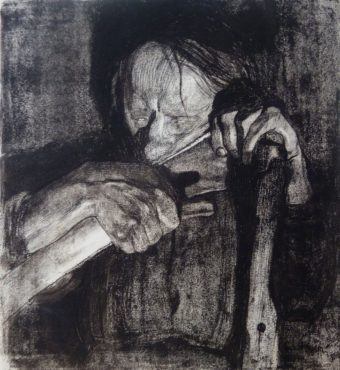
Kathe Kollwitz, 1921.
The ways in which one perceives fashion, in clothing for example, is perhaps the fastest changing. Pants you wore last year can be perceived as hideous, ugly, and unwearable now. (well, if you are fifteen). But where once, even a hundred and fifty years ago, these choices contained symbolic resonances and the links to traditional pastimes and customs were still remembered; today these choices are pushed by a fashion world (and marketing apparatus) that have exactly no memory. Clothes are echoes of recent fashion, but nothing that is backward looking at the culture. And here I want to suggest that that brief Ab Ex window, for painting and perhaps for all the arts, was the last vestige of a resistance that remembered itself. Ab Ex was de-mythologized prayer.
I am certain that it is only recently that many people are waking up to just how comprehensive and exhaustive is the state of intellectual alienation that exists for most people in the West today. And I think the most recent phase of escalation began in the early nineties. But I think it would be a good idea to revisit Horkheimer and Adorno’s ideas on the Enlightenment. The book is over seventy years old, now. And god knows a lot has been written about it. I would venture a guess that most, at least over the last twenty years, has been critical or negative.

Ruprecht Geiger
“Positivism in Comte’s sense is essentially the scientific basis of governance by experts, while twentieth-century ‘logical positivism’ is its epistemological complement.”
Marcel Stoetzler
Adorno and Horkheimer argue that (as Stoetzler put it) the ‘cult of facts and probabilities’ has drowned out conceptual thinking, a blocking of the theoretical imagination. The cult of the factual, the computational, and over the last twenty years the computer/cyber algorithmic driven logic, has affected taste and perception. And it has effected speech and dialogue and text. It has effected everything.
“The task of {cultural} criticism must be not so much to search for the particular interest-groups to which cultural phenomena are to be assigned, but rather to decipher the general social tendencies which are expressed in these phenomena and through which the most powerful interests realize themselves. Cultural criticism must become social physiognomy. The more the whole divests itself of all spontaneous elements, is socially mediated and filtered, is ‘consciousness,’ the more it becomes ‘culture.”
Theodore Adorno

Lolo Soldevilla
It is now harder and harder to *look* at artworks, to experience them, without a vague but persistent sense of self doubt. For the rapidity with which information is now transmitted and the near instantaneous access to data and materials, to image and video has above all else just accelerated certain rote judgements, but also has sped up the analysis of cultural product in such a way that doubt cannot be avoided. For the mini narratives of historical reflection, a kind of slow careful contemplation, is simply nostalgia now. The actual contemplation is often fragmentary and of limited duration. But the grammar of art criticism, even informally, remains made up of an increasingly revisionist historical imagination. The narrative of ourselves, then, in a sense, is more and more fictitious. It is not a matter of too little time, although it is that also, to some degree, but rather it is a quality that digital culture imbues on everything — the sense of repetitive sameness (see Tacita Dean here…https://necsus-ejms.org/the-last-ray-of-the-dying-sun-tacita-deans-commitment-to-analogue-media-as-demonstrated-through-floh-and-film/) and how the digital is held up as perfect when in fact it is probably on most counts inferior (there is much written on digital recordings of classical music vs analog). But really, inferior or superior are meaningless in this context. The digital is inherently unable to be transmit the qualities of experience usually associated with the *uncanny*. The digital is cleansing. It is antiseptic. And this antiseptic characterless paradigm creates something disruptive in its reconfiguring of bourgeois reverence toward these reflections of themselves. The bourgeois elitism of ‘having the time’, of having leisure to experience and contemplate is, of course, fiction, too. But the new speed and cleansed images of the new attention economy are both embraced and mediated with nostalgia — there is manufactured ode to the past, to retro styles and pastoral backdrops to art, in particular painting. Elitism is buoyed by the sense of being able to step back and enjoy vinyl records for examples. Nostalgia is ever more present in the subjectivity of the West. The emphasis on progress, with a goal of implied eventual perfection always allows for the indulgence of nostalgic imperfections. Amusements are always imperfect in conspicuous ways.
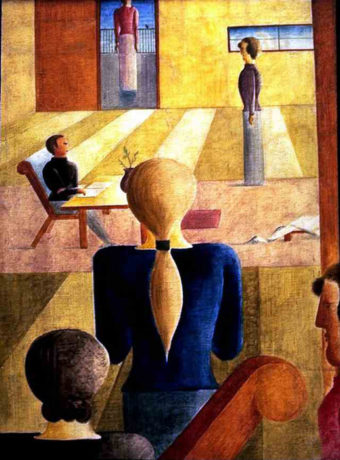
Oskar Schlemmer
Dave Harris (essay on Dialectic of Enlightenment)
What seems crucial in seeing Horkheimer and Adorno’s thesis is that the ideas buried within the Enlightenment were themselves anti Enlightenment, but dialectically so — individuality was promoted but mediated. Men might become individuals through freedom (sic) and democracy the better to be exactly like each other. And in art, the critique goes back to Kant and his notions of natural beauty. The idea of Nature itself is an historical construct but regardless of that the ideas contained in Kant were to be gradually repressed (if you believe Adorno) while at the same time, and because of, the artwork was growing in spiritualization — or really, just autonomy. Art was growing in independence from Natural Beauty. But in doing so it was also always returning to Nature (and here the topic becomes mimesis). What is important about spirit and Natural Beauty in this context is that the artwork can only achieve transcendence (or autonomy) by being created as a special configuration of elements. This context is what allows for…in Adorno’s example it is Beethoven and the Kreutza Sonata where a subdominant chord is of enormous importance, but a chord that if it appeared in a bubble gum ad would have no resonance.

Adolph Gottlieb
“The pure concept of art could not define the fixed circumference of a sphere that has been secured once and for all; rather, its closure is achieved only in an intermittent and fragile balance that is more than just comparable to the psychological balance between ego and id. The act of repulsion must be constantly renewed.”
Adorno
Now I am jumping back and forth a bit between the critique of the Enlightenment, and the role of art in the modernist era.
“Today, however, we know that the destruction of experience no longer necessitates a catastrophe, and that humdrum daily life in any city will suffice. For modern man’s average day contains virtually nothing that can still be translated into experience . it is this non-translatability into experience that now makes everyday existence intolerable – as never before – rather than an alleged poor quality of life or its meaninglessness compared with the past (on the contrary, perhaps everyday existence has never been so replete with meaningful events). [E]xperience has its necessary correlation not in knowledge but in authority – that is to say, the power of words and narration; and no one now seems to wield sufficient authority to guarantee that truth of an experience. and if they do. it does not in the least occur to them that their own authority has its roots in an experience. On the contrary. it is the character of the present time that all authority is founded on what cannot be experienced. and nobody is inclined to accept the validity of an authority whose sole claim to legitimation was experience.”
Giorgio Agamben
“Mythology itself set off the unending process of enlightenment in which ever and again, with the inevitability of necessity, every specific theoretic view succumbs to destructive criticism that it is only belief, until even the very notion of spirit, of truth and, indeed, enlightenment itself have be- come animistic magic.”
Horkheimer & Adorno (Dialectic of Enlightenment)
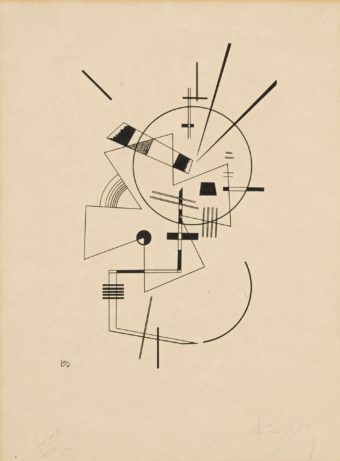
Wassily Kandinsky (Lithograph)
One cannot step outside of the Enlightenment. Our grammar and habits of looking are predicated on principles we assume to be rational.
“The mythic-dominated origin of culture and civilisation is a posit of enlightenment rationality it- self. This posit raises a wholly conceptual question: what are the logical parameters of myth and enlightenment which could explain how the project of overcoming myth, a project that in its self-conscious form is uniquely modern (however much anticipated by Greek philosophy), could eventuate in the nihilistic present? That we should conceive of this conceptual issue historically, as a process of overcoming, is demanded by enlightened reason, whose modern hegemony indeed comes to create the very process it projects onto the historical past.”
J.M. Bernstein
Adorno and Horkheimer would never be so crude as to suggest the Enlightenment and reason itself were not worth saving. But only that reason and the values associated with civilized humanity must be examined and this examination must delve into both the collective history of man, and also the the history of the individual. Robert Hullot-Kentor wrote: “For throughout the German Enlightenment, and especially since Kant, the defense of reason has been conceived not just as inseparable from but ultimately as dependent on the aesthetic.” That is an important point. Maybe it is THE central point in a discussion that started with Abstract Expressionism and with an audience, an educated bourgeois audience, that can no longer *feel anything* in front of canvases they once revered. Now I am not contesting the veracity of what they claim, but only that I suspect this is rather common today. People (on the left as much as the right) love to dismiss the New York School through the tired and worn story of the CIA promoting it. And yes they did, and they helped with the Iowa Writers Workshop, too. And that is telling. But the work, the potential emancipation of art overall is an idea or belief in stark decline. And this has to do with both digital and computer technology, as well as the effects of a new magical thinking. Political analysis is increasingly the provence of a new (old) form of the fairy tale.

Oksana Yushko, photography.
Adorno said “art and art works are what they may become”. He also notes that art is not reality (or empirical reality). But the ways in which art is not reality change over time. History changes how the individual values art, and these changes are part of several processes, both occult and political. In fact this is the topic he starts with in Aesthetic Theory.
Modernism has always been, since the late 19th century (THAT definition of modernism) a search for the new. For novelty. Except as Adorno points out, the search for novelty is akin to capital’s continued expanding reproduction. Now, abstraction, for Adorno, was a mirror of the abstraction of human relations under advanced Capital. There is a clear Kantian grammar in all this, but the important (if obtuse) point is that aesthetic judgement, the already established aesthetic judgement functions like a mimesis of judgement, what J.M. Bernstein described as a kind of contagion — that this mimetic judgement like thing infiltrates the discourse, and provides a structure where there is no structure. Its all illusory in a sense. This is hugely opaque and a difficult idea and there isn’t room in this post to do it justice. But the point is that this idea of autonomy is finally impossible, and that the experience of an artwork cannot be tied irrevocably to some hermeneutical directive. Art is not there, finally, to be deciphered. (and this is a very huge topic and one that is exemplified in literature where certain writers of fiction; Borges comes to mind, are creating work whose sole meaning is figuring out the puzzle. Nabokov is another, but less extreme, and much post modern writing of the DeLillo school would also qualify).
Bernstein writes…“Conceptual domination, the repression and squandering of particularity and sensuousness { } …as evidenced by technological rationality and capitalist social relations is caused by the regimentation of reason by the drive for self preservation under conditions of social domination until, finally, only instrumental reason and its correlatives (inductive and deductive explanation, correspondence theory of truth, etc) are regarded as possessing cognitive worth.”
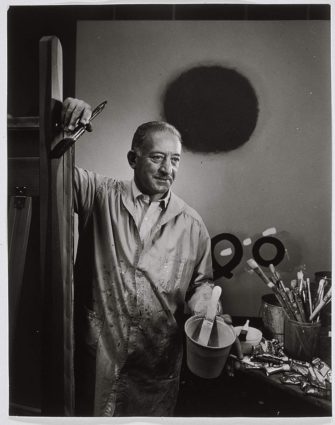
Adolph Gottlieb
The dilemma of autonomy is that when the artwork IS autonomous, it can be coopted just as easily as the non autonomous. The commodified realm that reproduces the *same* constantly is able to provide comfortable marginal spaces for autonomous works. All art must be (per Adorno) waiting to be interpreted. And yet, that interpretation must always fail, or DOES always fail, and hence this tension between rejecting interpretation and knowing interpretation cannot be escaped, is central to modernist art. In short, two things — one is that the incomprehensibility of an artwork is where the meaning resides, however paradoxically, and two; the paradox, the antinomic register in which art exists, provides the best evidence (Bernstein) that the world which the artwork excludes, or the world outside art, is disfigured and repressive and the exclusion of what the artwork tries but fails to resist ultimately, and what their illusory wholeness is an illusion of.
Roger Foster has an interesting book that argues for Adorno’s somewhat buried (though its pretty open in his late lectures on Negative Dialectics, circa 1965) insistence on the spiritual in art.
“Spiritual experience, I will argue, is the awareness of scientific rationalism about itself in its self-reflection. Or, in other words, it is the revelation of scientific rationalism as a form of experience (and this means: as a form of experience premised on the mutilation of experience). Any hints of a reconciled reason that appear within it are nothing but the inverse image of its disclosure of the mutilated character of experience in the present.”
Roger Foster
Art’s only justification (in contemporary life anyway) is to make the viewer or audience aware of the repressive social reality of life under Capital (which of course has further implications). The work that has followed the New York School was and is work that retreated from the dangerous precipice that the best of Ab Ex painters took painting. That is all, really.

Barnett Newman (Stations of the Cross, National Gallery).
As always, you can donate to this site using paypal at the top. Sincere thanks, again, to those who have.

Was thinking recently about how earlier in modernism, and long before it, invented & stylized visual languages were understood to be common property. They could be picked up and used and developed further by any artist, like a spoken language. Going back, in artisan workshops, even the specific identity of the master could be treated as shared property.
Now the prevailing idea is that an artist’s visual language must be unique and highly personalized to be authentic (even though it is often neither). In the Romantic sense, the subjective element is more central and valued than ever. I think abstraction must have started to crack this apart, as it emptied visual language of its references to a shared reality. By the time of Ab Ex, the idea of shared visual language must’ve broken down for good, and it’s as good a point to delineate is as any. The Pop Art of the 60’s revisited the idea of shared visual language mockingly, sardonically – appropriating the consumer iconography of advertising and comics in order to disavow it. As if to bury it.
Got a lot out of this post.
About Tacita Dean. Yeah: there is in her something linked to a very tweet fad, the spirit of steampunk and nostaligia, (Peter Ackroydism; Ackroyd himself is a terrific novelist, too, but his big themes are reactionary really and all this twee garbage succeeded his innovation). But yeah it’s still good. And it’s interesting now, just the fact that the 16mm film which was once that technological embodiment of all that would make that enchanted world of technology/magic vanish, of Jetsons futurism (home movies!) is now the fetishized last gadget/process of the lost epoch whose coffin in nailed closed. Analog recording practise of any sort is now the spirit of alchemy, catching the fleeting and increasingly disbelieved-in, debunked real/living/human. It’s like people no longer believe in the “unmediated” phenomena of which analog records , visual and sound, are the direct traces and imprints, at all. Or it is so trivial that they wonder why centuries went into the effort to contrive to capture imagines light cast directly on paper. The physical motions of an individual the residue and relic of which are these abex plaintings, are so trivial now for not being properly mediatized it’s as if they have been demoted from what were precious fossils to whar has become just dirt, just oil, The forensic verification that was so central to the importance of their value (always troubled by this presumed ease of forgery, and yet they were less successfully counterfeited than Vermeers) has lost its gravity. The worst nightmarish alarms about dehumanization rung by the reactionaries at postmodernism have all come true. But looking back at all these products of the US in the immediate postwar, the American take on French existentialism, the Jetsons consumer-goods-centred futurism latched to the genesis of “camp”, the proliferation of splits of elite/popular, genuine and knock-off, (in both strains of serious music, jazz and classical, as then in the splits of them, splitting and splitting again and again on these lines) the reversal of fashion trends to a elite-street dialectic mediated by burgeoning ad industry and department stores (aren’t the 50s blue jeans, moto jacket and tshirt really the first fashion to go workers—->upper class in an endlessly profit generating way, tho it had happened on imperial axes before)…all now in hindsight seems to share an increasinly deperate attempt to assert some or other ground of humanism – generally just vanilla liberal humanism when it comes to the plastic arts — against the bodysnatching of capital. I am reminded of The Recognitions and Wyatt Gwyon’s mishigas, what is really required of him to make these counterfeit (A term revealed “under erasure’) Memlings: it is a state Gaddis himself is striving and failing to achieve in the work that contains Gwyon — some state that would allow him to produce what Tolstoy or Musil produced, and its as if he is trying to keep water from swirling down a drain just by grabbing it with his fingers. Tacita Dean is doing this too. The fake historicity that is pomo eventually congeals as the substitute for this lost historical being and the place marker of its absence, a better, more digital-ready place-keeper than French existentialism’s dynamic fantasy of _spontaneous_ authenticity of which the AbEx work, on the philosophical level, seems to involve an American adaptation.
anyway, I’d want to interrogate [you, this proposal] about “deciphering”: deciphering as holy scriptures are deciphered is a kind of neurosis and yet interpretation is an essential invitation of art, isn’t it? Something that didn’t tempt one to interpretation would probably not be recognized as art. Rothko’s work before the ABEx stuff is fantastically great, in the Chagall and Ensor and Beckman vein, just wonderful, and in a lot of ways the AbEx stuff is better understood in the context of this trajectory — from a certain modernist idiom to this new place his own formal explorations surely led him but which saw him end taking commissions from big corporations to decorate their HQs, and having to deliver appropriate products no less than Michelangelo had to.
So that in itself is itneresting – how the pope demanded of michelangelo certain meaninngs and how the more recent powers desired recession from meanings or the meaning of meaninglessness (Spivak made this quip just at the dawn of the age that would devalue te AbEx work: that critics like Hayden White and Paul DeMan were “claiming meaninglessness [for their objects and their own products] too hastily”), and how this all tracks values and the production, flexibility and manner of determining them. What I find paradoxical and maybe mysterious is the movement that AbEx exemplifies, its strain of aestheticist l’art pour l
art. to at once demand a) completely individualized control of both value and meaning on principle b) paradoxically, total universal social recognition of this control c) infinite value latched to utter meaninglessness, or the inverse relation of value and meaning
These are really new positions (except in some Christian mystic theology?) a new metaphysics of both meaning and value, and they seem to go with developments of financialization. But their paradoxical quality is an attack on/challenge to Reason and rationality not only in the forms Adorno and Horkheimer took aim at, but even more profoundly on language function. And even as the discourse around AbEx is left behind as its analog properties become corny to consumers, as if calling for nostalgia for embodied existential projects, this defeat of the rationality that obtained, that arose from and belongs to the forensics of landed property, that rationalty that grew out of those arrangements and its courts and laws, is generalized and accelerating.
its interesting historically how works increasingly recede through modernity: they provoke the response of interpretation all the same, but increasingly run away from that response. I was reading for my Velasquez project this Gracian Agudeza y arte del ingenio. Of course in that period, waning Spanish empire, nothing is “spontaneous” about art practise, there is no value placed on spontaneity or instinct-driven practise, which is not imaginable except as conditioned and structured and made possible by social labour, Velasquez is considered one of these artists who pushed certain aspects of the indescribable individuality of experience between artist and model (not just of the artist, but of the models) further but always the analysis and the appreciation comes back to the immense social work, the knowledge of optics, the understanding and science that support the freedom of the artist’s hand-eye in the given instant. And Gracian talking about wit — which is obvious inspitation for Velasquez’ approach to his task — is all about the structures beneath things, the conditions and the social practises that give rise to products of “individual” genius and inspiration. The whole idea of “individual genius” that we have and that AbEx is partly re/producing and re/produced by — which to me seems a misreading anyhow, and requires the isolation of these works as kind of miraculously appearing — is just incomprehensible to Gracian or Velasquez. The common sense about individuals in the world is just basically dialectical, inescapably. The people of that society don’t even lose the sense of themselves as processes metabolizing the world in deliberate monkish isolation. The practise of producting art as contraptions of a sort, things that function, including as decipherable texts and gestures of wit, is just taken for granted: the idea of an art seeking to slough this off is just not present, and yet the “spontaneous” highly subjective inspiration grows on/out of these contraptions that are say Velasquez paintings or Calderon plays. Do the AbEx works appear less determined and conditioned: mediation creates the illusion of this isolation as the market organization of production and distribution lets everyone feel free…. until all of a sudden everyone feels completely unfree. And perhaps the AbEx was loved when it reflected this feeling that everyone was free, and now it is receded from when it seems to suggest that this was a terrible illusion and we are all in this cage that just closed.
Very
*twee fad
i meant to say
To put this another way: AbEx is coming from a commoner population more valued and protected by the system than ever before in class society, and say it’s reassuring the consumer of it “I don’t mean anything! Life is meaningless! I am meaningless!” in a Dionysian way
And today it seems more like the State/Capital/Empire agreeing from its bench/pulpit/bomber cockput: You don’t mean anything. Your life is meaningless. You are meaningless.
oh, so much to answer here Molly. First….your remarks on Tacita Dean are excellent. Yeah….there is no escaping this problem you describe with her work….much as I am seduced by it. She has impeccable taste. But still…..the twee thing, the retro indulgences…its problematic just on that level. I have to sit and think a bit about some of this other.
Interpretation. I wrote just a bit at the end about this, per Adorno. And it has to do, partly, with what he said about ‘art is that which it may become’. Or will become. He wrote a lot about this in his late lectures and i have to dig up those texts. But I think you are also right….or partly this is what is going on….with the idea of suddenly Ab Ex doesnt feel like freedom. It feels like something very much else. The running away from the interpretation is because the interpretation falls prey to instrumental problems of a language now marinated in post industrial grammar. In cyber grammar if you want. Thats part of it. The Ab Ex painters….the best of them anyway, would probably agree that none of this was about art for arts sake. I mean Klines work directly resembles coal veins in corrupted poisoned ground. Abstraction is never abstract finally. Its arrived at through this trajectory of practice and knowledge. All those guys, or a good many, studied philosophy. Thats so in contradiction to the PR that was applied to them. They seem very close in my mind to chinese classical painting, or to Noh drama even. But abstraction was also, the novelty end of it perhaps, something that reflected the abstraction of life under capital. Of human relations. Im repeating what i wrote above but its a fascinating aspect of this. And also….how fashion appropriates from the bottom social rung and repurposes …but that action can never lose the trace suffering of the origins. And hence this rapid repetitive introduction of the *new*. But there is much here i have to think on a bit. Thanks.
I’m thinking about Rothko; Jake reminds me he was a very systematic thinker, who thought and studied hard about everything he did. He even committed suicide expertly and correctly (slicing down along the whole inside of his forearms from the inner elbow to wrist). A web article has these quotes of interest:
“It was with the utmost reluctance that I found the figure could not serve my purposes….But a time came when none of us could use the figure without mutilating it.”
In a 1943 letter to the New York Times, written with Adolph Gottlieb and Barnett Newman, Rothko said, “It is a widely accepted notion among painters that it does not matter what one paints, as long as it is well painted. This is the essence of academicism. There is no such thing as a good painting about nothing. We assert that the subject is crucial and only that subject matter is valid which is tragic and timeless. That is why we profess a spiritual kinship with primitive and archaic art.”
A propos of one of his Aeschylus paintings (The Omen of the Eagle, I think) he said: “The picture deals not with the particular anecdote, but rather with the Spirit of Myth, which is generic to all myths at all times.”
here are some examples of the mass media hostility (and fear) of ab ex and seriousness in general https://www.independent.co.uk/arts-entertainment/art/features/mark-rothko-still-hip-to-be-square-940133.html
and this , Im sure, appalling play now https://www.theguardian.com/artanddesign/2009/dec/12/mark-rothko-red-william-boyd
this from rothko’s writings on art (slim but terrific volume): ” In his intimate journals Vollard tells us that Degas feigned deafness to escape disputations and harangues concerning things he considered false and distasteful. If the speaker or subject changed, his hearing immediately improved. We must marvel at his wisdom since he must have only surmised what we know definitely today: that the constant repetition of falsehood is more convincing than the demonstration of truth.”
” the art of the advertising artist can be understood only by the study of the mind of the salesman. The aim of each is to sell his respective product by exaggerating its virtues and suppressing its defects. The illustrator will find his soul mate in the news reporter or the tabloid photographer. The verisimilitude of his descriptions will depend upon what appears real to his employer. The fashionable portrait painter is closest to those courtly flatterers whose hypocrisy is the ladder to material success. While the man who contrived his pictures so they look well above a sofa, as well as the decoratorand stylist, shares the intentions of the confectioner, whose function it is to season luxury with the pleasures of the senses.”
I think some key post-AbEx artists are missing from the argument here.
Trevor Paglen, for one. Some of his series demand to struggle through abstraction in a most interesting way. All these photographs are reminiscent of both the romantic tradition (sunsets, etc.) and AbEx (Rothko in particular with quasi monochrome veils of colors). All are a lure and a trap, finally. They stem from a dialectic of representation/abstraction at its most intense : art at the risk of its own dissolution. Limits. Yet struggling through, social and economic abstraction : processed through abstraction of forms. For instance his photographs of light pollutions over prisons at night : it attests to (and obfuscates simultaneously) how much energy is used in the name of security. Everything that matters is concealed, his work acts as negative disclosure, it makes the invisible palpable through its very absence, by the way it affects the skies, etc. Akin to black matter which though invisible makes its presence felt by induction ; what is not there attests to some thing.
Then, there is Philip Guston, and I’m quite surprised he’s not been mentioned. He’s possibly the most intense painter in the twentieth century. He made a very clever ‘leap’ from AbEx to… what ? Couldn’t be named figurative (he certainly wasn’t making a point of duplicating visual data out there) – and argued in a non-dogmatic fashion contra AbEx – FOR the enigma. Sustaining the enigma, all the way through. Enigma bathed in crudeness or rawness bathed in mystery, what’s more. It demands guts. And to me, his later works are of greater significance. One key point here is that it couldn’t be held on an office wall. I can’t resolve myself to see this level of intensity and anguish reduced to decorative sterilization. Guston’s paintings struggle through ambiguity and meaning in a way self-referentiality and reduction to the medium and painting about there being nothing to paint cannot. And yet he not so much works against the grain of AbEx as keeps on digging around the same troubled spaces, as logical continuation. To me, he’s the cave painter of our era.
“My interest lags with a great deal of what is called ‘abstract art’, and I think it is for this reason : I don’t think you can begin with what you should end up with.”
um, trevor paglan isnt even a painter. I mean i like paglan. Im not sure he is doing what you suggest, though. I think he operates in a different register. But i will take this under consideration.
Guston is regarded highly in some retrospectives of ab ex. Two things perhaps mediated the perception of his work. One, he was from LA (went to manual arts HS). He did know pollock well when they were young. And two: his late return to figurative art was by way of work that appeared cartoony. (im writing another blog post now that considers illustration and oddly enough I “AM” talking about guston). The late work has perhaps not aged very well. At this point anyway. He did do a fantastic mural (with rueben kadish, at the library out in Duarte CA. ive seen it in person and its rather great). https://livingnewdeal.org/projects/city-hope-physical-growth-man-mural-duarte-ca/
Curious to look at the survivors of these maximalist [minimalist] stages of movements who live long enough for late style retreats from their formalist extremes,
…from serialism in music, from AbEx, from Dionysian psychosis in Ordeal (Chris Burden goes on to make monumental lovelines) and try to figure out what if anything was truly changed or subverted or exhausted or renewed by these aesthetic upheavals. AbEx is a bit of a unicorn, perhaps this distills something unique about the medium; contrast to automatic writing or the many other radical less enduring experiments in literary anti-mimetic expressionism (nobody reads even Finnegans Wake which is a success, much less all the failures ), or architecture, or performing arts.
@molly:
It feels as if there are so many secondary factors when trying to do what you suggest. I mean some in various movements never retreated. Others, like Guston, did. Many died too young. If you look at post coltrane say, and you have Cecil Taylor and Braxton and the AACM people. And ornette, and I love Ornette, but Im not sure anyone listens to his music very much. I do, but not often. But then I don’t listen to any music anymore to be honest. In theatre the retreat from Kantor and Grotowski and off of broadway has been deadly. I feel as if all these dead ends, all this exhaustion of energy, has been the result of a number of factors. It has intensified, this feeling, over the last twenty years. Over the last ten years even. In film, which is always a bit of an outlier, there is nothing anymore because of the hegemony in distribution, but also because there is no audience anymore for antonioni. Film schools don’t even watch antonioni, or pasolini or whoever. Fassbinder or bresson. There is no audience ….my sense is that outside of very large urban centers there is literally no audience at all. In big cities there is are the remnants of an audience. But people flock in huge numbers to big highly promoted museum events. The travelling barbie doll show was hugely successful.
Donald kuspit wrote…a few years back….”Reproduction trumps art by appropriating it wholesale — digesting it until it is a shadow of itself. Even in digital art the technology seems to usurp the place of the art. Reproduction levels its sensuality and weakens its emotional effect, subverting its vitalizing evocative power, and making it seem less intelligent than it is, and with that
de-estheticizes it, that is, renders it useless as a means to the end of esthetic experience. Paradoxical as it may seem, reproduction, which claims to serve memory, leads us to forget what is most memorable — experientially real — about the art by reducing it to an appearance. The real work is superseded by its cannibalization in reproduction.( ) Homo Spectator is socially, culturally and economically dominant, as the Situationist Guy Debord argues. For him it is not clear that Homo Spectator is Homo Sapiens. In the society of the spectacle, we live in fantasy not in reality, and we are unable to distinguish them. As Debord writes, “the spectacle proclaims the predominance of appearances and asserts that all human life, which is to say all social life, is mere appearance. . . it [is] a visible negation of life. . . a negation of life that has invented a visual form for itself.” “It turns reality on its head,” even as “the spectacle is real.” It establishes “the empire of modern passivity”: the “image of the ruling economic order,” it is “beyond dispute” and “demands. . . passive acceptance.” Where in an earlier capitalist stage, there was a “downgrading of being into having,” the current capitalist stage “entails a generalized shift from having to appearing: all effective ‘having’ must now derive its immediate prestige and its ultimate raison d’être from appearances.” The society of the spectacle relies on “technical rationality” to produce pure appearances — especially mechanical and digital reproduction, the most rationalizing technologies for producing appearances, the more spectacular the better: “the spectacle is. . . a technological version of the exiling of human powers in a ‘world beyond’ — and the perfection of separation within human beings.” Art has credibility and exists only as a marketable, “technical” appearance in the society of the spectacle — as what Debord calls an “image-object” in the service of the “dictatorial freedom of the Market,”
Now i think that everything is so quickly turned into a code, and one among many. Nothing feels as it has consequence. The loss of the ability to differentiate has increasingly fueled a pseudo audience that judges only novelty affects, and judges them cynically. Everything is a reality TV show, a game show. Internal narratives become internal voting at a beauty pageant or social media poll or something. There is a whole discussion to be had, and im writing about this now in a post that starts with illustration…about early childhood development. The loss of the reliable mother figure, or caregiver and a loss of confidence in the child. That loss details a phase in very early childhood where the child begins to find a space that is not itself, but still connected to itself. It is play, in a sense. It is reality testing, too, later on. And that may all be stopping or slowing down. And if thats true, then the child is going to grow up with ver big holes in its ability to negotiate social and group situations.
@anthony….if you can find Kuspit’s review of guston’s late work…it was for Art Forum. Might be hard to find but i remember it being very good.
@molly…more from Kuspit..
” . Where do we stand now? Well, a lot of art has become a version of show business entertainment, so what strikes me as significant is that you have the Whitney giving a show to Jeff Koons, you have Damien Hirst as the star of it all, the man who says he has no integrity, explicitly. You have two pseudo gurus, Marina Abramovic, who I think is very dangerous, and Yoko Ono at the Museum of Modern Art. So you have what you might call celebrity art. To me it’s “non-art” and the key to the book—an idea I expanded on—is Kaprow’s idea of post-art. He views it positively, I less so. The situation we are in—in terms of what receives attention and prominence (the greatest gift you can give someone or something is your attention)—is post-art, of all kinds. You can call it performance art, you can categorize it any way you want. It can be painting, or anything socially sanctioned as “art.”
At this time, and in social space, art is basically an adjunct of the entertainment business. Entertainment is the biggest art business, which is why art must be entertaining. (I like the distinction between entertainment and art made by the psychoanalyst Hanna Segal: you don’t have to do much psychic work to get entertainment, in contrast to art, which demands psychic work to be “gotten.”) I think there are many talented artists who are not fully attended to because their work is not entertaining enough, by the standards of the entertainment industry. So I see developing on the sidelines a kind of resistance. There’s something that has been called “New Humanism,” not my term exactly. There’s also David Foster Wallace’s idea of “New Sincerity.” I think the most interesting—shall one say seriously meaningful?—art is happening on the outskirts of post-art.
For me, the larger issue, which wasn’t entirely clear in the book, is the fact that modernism is over. What we have is endgame modernism. Its ideas have been assimilated and standardized. One definition of postmodernism, which I and others have used, argues that it is an attempt to integrate the so-called Old Master tradition and what Harold Rosenberg, following Baudelaire, called the tradition of the new. The point is that all art is now traditional. In a sense, everything that can be done has been done. I’ve been waiting for an artist to hang himself in a gallery. Schwarzkogler supposedly cut off his penis, to no great effect. It was certainly one way of getting attention, but only for a moment. It is not exactly what I would call art, namely, the imaginative transformation of lived experience.
The problem the contemporary artist faces is visually presented by Vincent Desiderio, an artist I greatly admire, in his piece called Cockaigne in the Hirshhorn Museum. It’s a huge painting, using Bruegel’s The Land of Cockaigne, the land of instant gratification, as its point of departure. There’s the table that Bruegel painted, but instead of his four figures on the ground around it, there are innumerable books of reproductions of art, their pages open to famous works of art of all kinds, symbolizing the information glut, the encyclopedic chaos we are in now. There’s no clear sense of relative importance or value. One might say we’ve always been in a situation of radical pluralism, not what is called the contemporary situation of permanent pluralism.
So the question is, for an artist, how do you ground yourself in that rich and endlessly complicated tradition? What are your choices, what are your decisions, what traditional/historical ground do you stand on? And can you stand up to it, hold your own in it? To me, one’s choice of orientation and perspective has to be informed by what I would call lived experience, resulting in a vision of life. And with that, “visionary art” and aesthetically significant art. I think my argument holds up.
I think what used to be called high or refined art, in all its variations and avant-garde form, is over—which doesn’t mean it isn’t being made. But so is post-art, the dead end of avant-garde art, the failed desperate attempt to save it from its self-destructiveness—eloquently described by Renato Poggioli—even as post-art is the final installment of that self-destruction. The issue is how to snap art out of its death trance—living its own death, so to speak—and make it once again a living and lived experience. “
John, you mean this one on artnet ? http://www.artnet.com/magazine/features/kuspit/kuspit12-4-03.asp
no, but its interesting he spoke of him more than once. Very interesting, thanks.